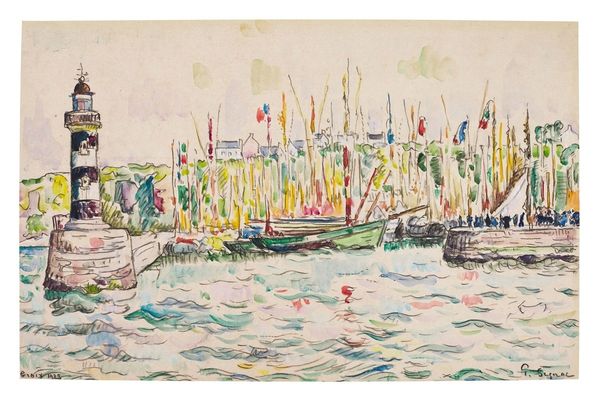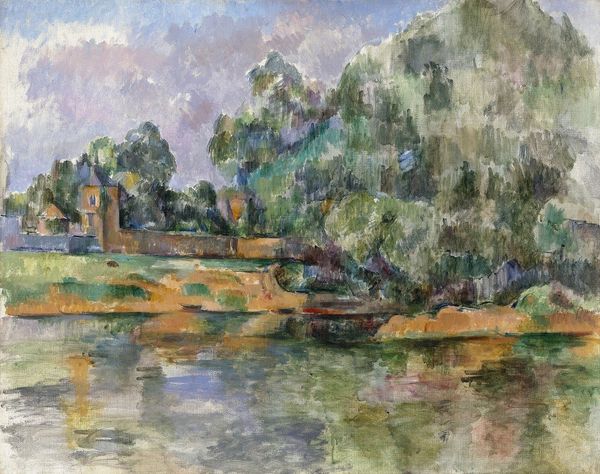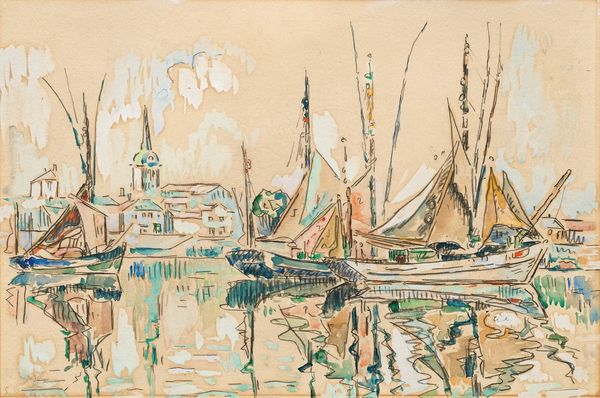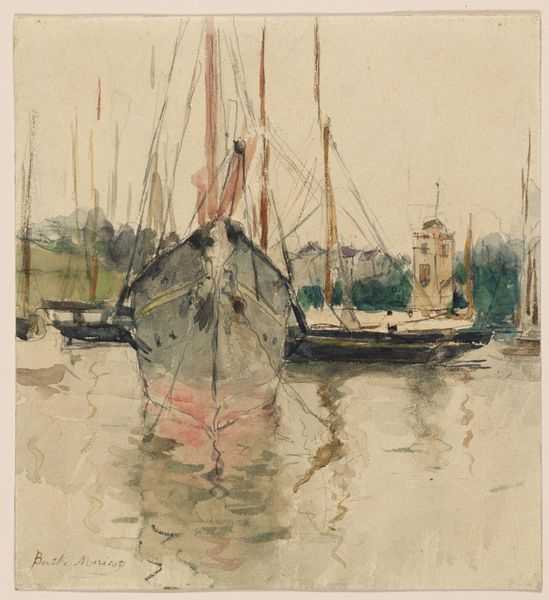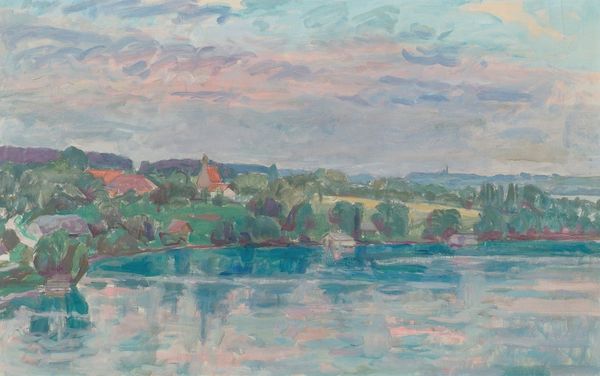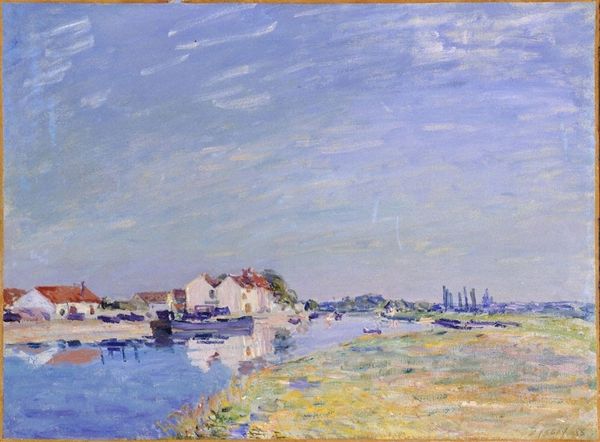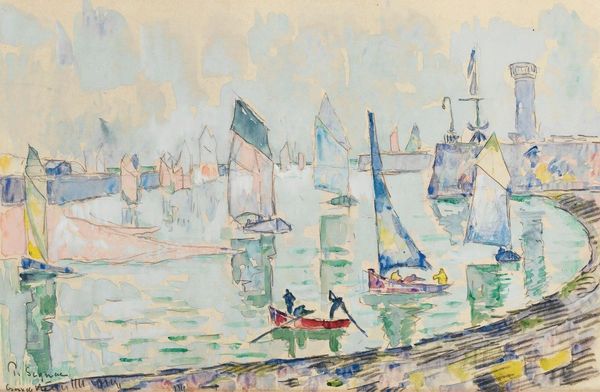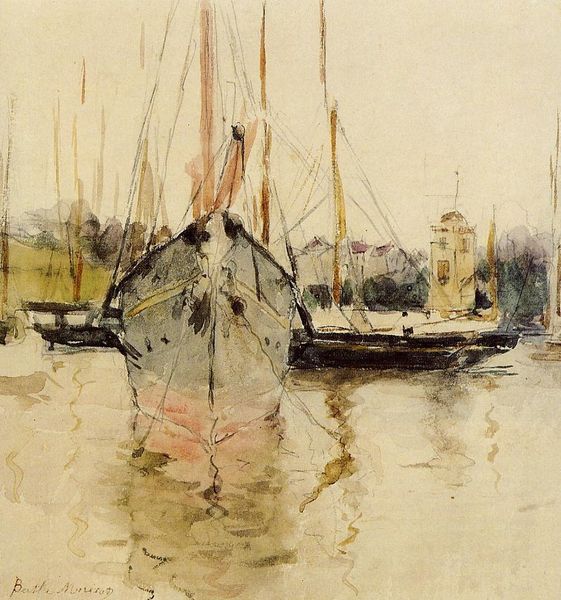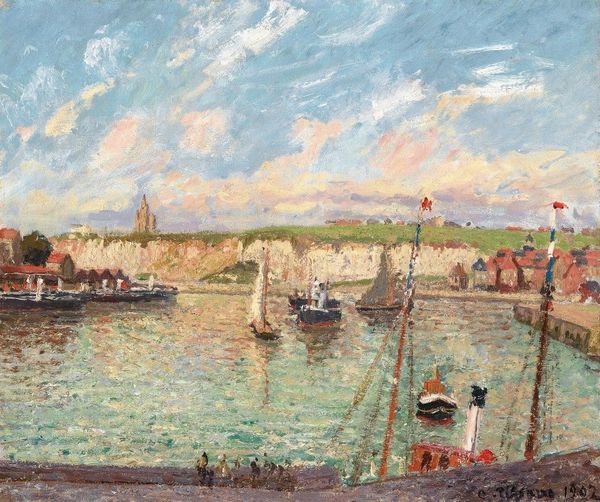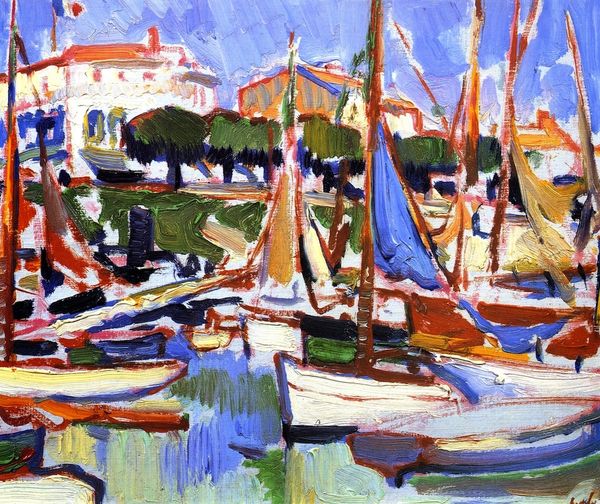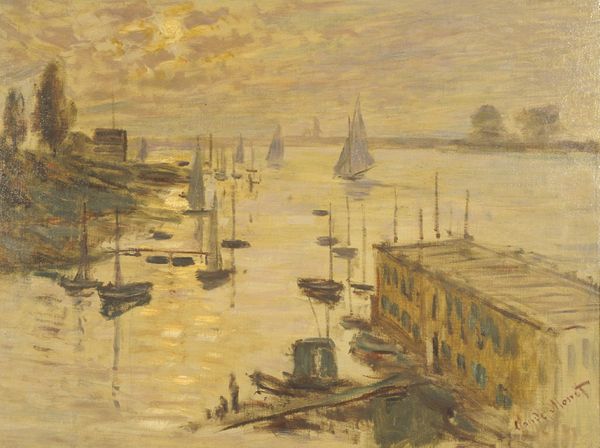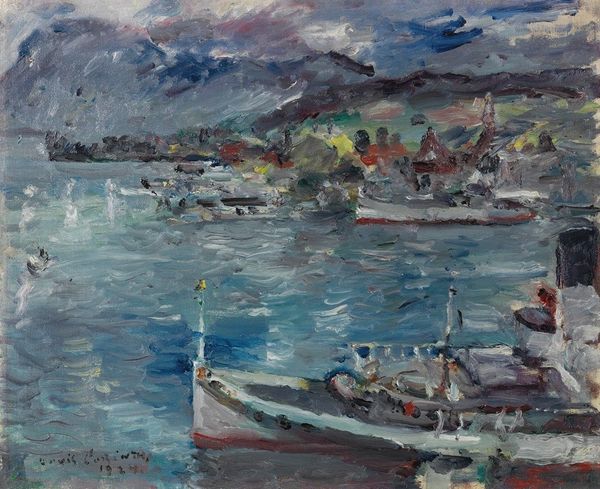
Copyright: Public Domain: Artvee
Editor: So, this is Max Liebermann's "Wannsee," created in 1925, presumably as a plein-air pastel. It strikes me as… almost dreamlike in its haziness. All the colors sort of blend together, making it feel like a fleeting moment. How do you interpret this work, especially considering the time it was made? Curator: It’s interesting you find it dreamlike. Viewing this piece through a historical lens, one sees Liebermann at the height of his fame, painting leisurely scenes like this while social and political tensions in Germany were rapidly escalating. The "dreamlike" quality might be viewed as a deliberate aesthetic choice – a conscious retreat from the anxieties of Weimar Germany. Editor: A retreat, you say? I hadn't thought of it that way. Curator: Yes. Liebermann, as a prominent Jewish artist and leading figure in the Berlin art scene, was increasingly facing criticism and veiled threats. His art became a symbol of what the rising Nationalist Socialist party rejected: modernism, internationalism, and Jewish influence. Considering this, a tranquil scene of leisure becomes a quiet act of defiance, almost an elegy for a disappearing world. Doesn't that shift your initial reading of it? Editor: It does. Seeing it as a form of resistance gives the pastel a totally different weight. It becomes much more poignant than simply a pretty picture. Was his work overtly political at other times? Curator: Earlier in his career, yes, Liebermann engaged more directly with social issues, portraying laborers and urban life. But in his later years, particularly after the First World War, his work shifted towards these idyllic scenes. Think of it as a parallel to the "Neue Sachlichkeit" movement, where artists responded to the trauma of the war by documenting a stark and sometimes critical reality. Liebermann chose a different path, creating an escape through beauty. Editor: That's a really helpful comparison. So the context really informs how we understand the artist's intentions, even in what seems to be a simple landscape. Thank you! Curator: Precisely! Art rarely exists in a vacuum. Examining the socio-political climate truly enhances our appreciation and understanding.
Comments
No comments
Be the first to comment and join the conversation on the ultimate creative platform.
